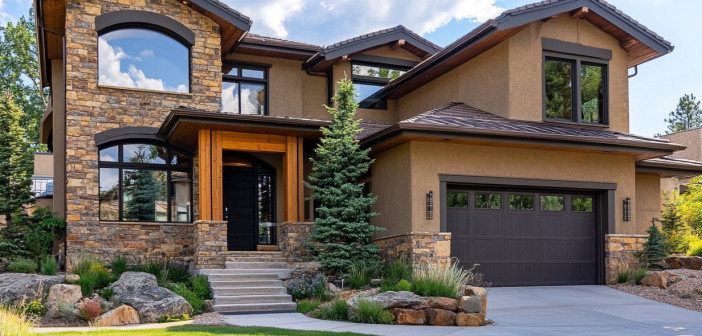Reductions in the tax breaks for landlords and higher borrowing costs have made buy-to-let investments less attractive. So is becoming a landlord still worth it?
Wind back the clock 20 years and investing in buy-to-let was growing in popularity. Buy-to-let mortgages were introduced in 1996 and, as property prices were much lower then, getting a deposit together for a small house or flat was more achievable than it is today in many parts of the country.
Landlords were also given tax breaks which helped make their buy-to-let investments profitable.
Today, the situation has changed substantially. Tax breaks have been scaled back, interest rates are close to a 15-year high and there’s a higher rate of stamp duty on purchases of second homes.
Some landlords have sold up while others are considering the viability of their investments.
So is it worth it being a landlord in 2025?
What you should know before becoming a landlord
It’s a common misconception that being a landlord or investing in buy-to-let property is not financially viable at all in the current climate.
You might hear people say that letting out property is only profitable if the property is owned outright.
However this isn’t entirely true. It’s still possible to make money from buy-to-let provided you get the numbers right, and your tenants will be paying your mortgage on a house or flat.
There is no doubt that the scaling back of tax breaks for landlords, including the restriction of mortgage interest relief, plus the stamp duty surcharge on purchases of second homes, on top of higher interest rates, has caused some landlords to sell up.
Landlords with small deposits and large mortgages in areas where property prices are high have had the biggest difficulties. They may have found that rent achievable on their property would not cover the mortgage at today’s higher interest rates, or that without the tax breaks it wasn’t worth the hassle.
The success of a buy-to-let investment venture depends on a number of variables, including:
- Location and type of property
- Rent you can achieve
- Size of mortgage
- Whether you are employing an agency to find tenants or doing it yourself
- How buy-to-let works in your investment portfolio
Before investing in buy-to-let, you need to do some careful calculations. Include realistic figures for rent, mortgage repayments and other costs, both at today’s rates and in the future (if interest rates rise, for example, however unlikely that might seem right now).
You should be able to answer the following questions:
- What kind of property would you invest in and where?
- Who will the tenants be? Students, young professionals or families?
- Will you use an agency to manage the property or do it yourself?
- Will the rent you receive on the property cover at least 125% of the mortgage repayments?
- If interest rates go up, will you be able to make your mortgage repayments?
- How will you pay the mortgage during void periods?
- How much profit will you make after deducting insurance, agency fees or cost of finding tenants, maintenance and taxes?
- How long do you plan to keep the property and what is the plan for selling it?
What are the advantages of being a landlord?
- Your tenants are paying your mortgage
The big advantage of buy-to-let is that tenants are paying most, if not all, of a mortgage on a property in your name. That means you are buying an asset which could appreciate in value.
- Mortgage rules require rent to far exceed the mortgage payment
Criteria for lending on buy-to-let mortgages was toughened up some years ago, and in some instances this is to the benefit of landlords.
The rental income on the property you’re hoping to mortgage needs to cover at least 125% of the monthly repayment. This means, provided the property is tenanted at all times, you will be covering the mortgage and then some. The additional income can be used to cover your other costs.
- Mortgage interest relief
Landlords can claim 20% of their mortgage interest as a business cost. This means it is deducted from their rental income, before calculating tax on the remainder.
This is a generous perk, as owner-occupiers do not get to claim any of the interest they pay on their mortgage as a tax deduction.
However, older landlords will remember the system being far more generous than this. It was scaled back from 2017.
- Property is a physical asset, unlike bonds or shares
Yields on buy-to-let might not be as high as they were relative to other income-yielding investments such as bonds or high-dividend-paying equities.
However, a property is a physical asset which means there are practical benefits that you don’t get when investing in financial assets.
Most obvious is that the property can be lived in, by family members or yourself, if you are thinking of downsizing. This is something to bear in mind if you are considering investing in buy-to-let for the first time. It may be sensible to find a property that you or your children would be happy to live in one day.
What tax bills do landlords face?
There are taxes to pay with the purchase and sale of the buy-to-let, plus tax on the rental income received.
- Additional stamp duty
There is now a 5% stamp duty surcharge levied on the purchases of second homes and additional properties in England and Northern Ireland. In Scotland the surcharge for second homes is higher, at 8%.
For example, a landlord purchasing a £300,000 house in England would have to pay £20,000 in stamp duty. This is an effective tax rate of 6.67%.
If this was a home-mover purchasing a house to live in, the stamp duty would be £5,000, an effective tax rate of 1.67%.
- Capital gains tax
When you sell a second home, if it has increased in value since you bought it, there will be capital gains tax to pay on the profit. The government has reduced the tax-free amount of capital gains – or profit – an individual can make before capital gains tax is due.
It is currently £3,000, meaning profit above this amount is taxable.
How will the upcoming Renters’ Rights Bill affect landlords?
Giving tenants more protection from rogue landlords was part of the Labour government’s election manifesto.
The Renters’ Rights Bill is still making its way through the House of Lords at the time of writing, so we cannot say what will be in the final bill or when the measures will be introduced.
Some of the proposals include a ban on no-fault (section 21) evictions, the abolition of fixed-term tenancies and limits to rent increases.
There are also plans for an ombudsman to oversee the private rented sector. Landlords would have to pay to be registered with the ombudsman and there would be fines of up to £5,000 for landlords who do not join.
The ombudsman would intervene to solve disputes between landlords and tenants impartially. It also means that if a landlord does not adequately respond to a complaint, the tenant will be able to go straight to the ombudsman.
Should Iandlords set up a limited company?
Record numbers of buy-to-let limited companies were set up last year as landlords seek to cut their tax bills.
If buy-to-let properties are owned within a limited company structure, then tax on rental income will be paid at corporation tax rates.
However there are costs involved in administering a limited company and if you already own buy-to-lets they would have to be sold and purchased by the corporate structure, which incurs stamp duty.




